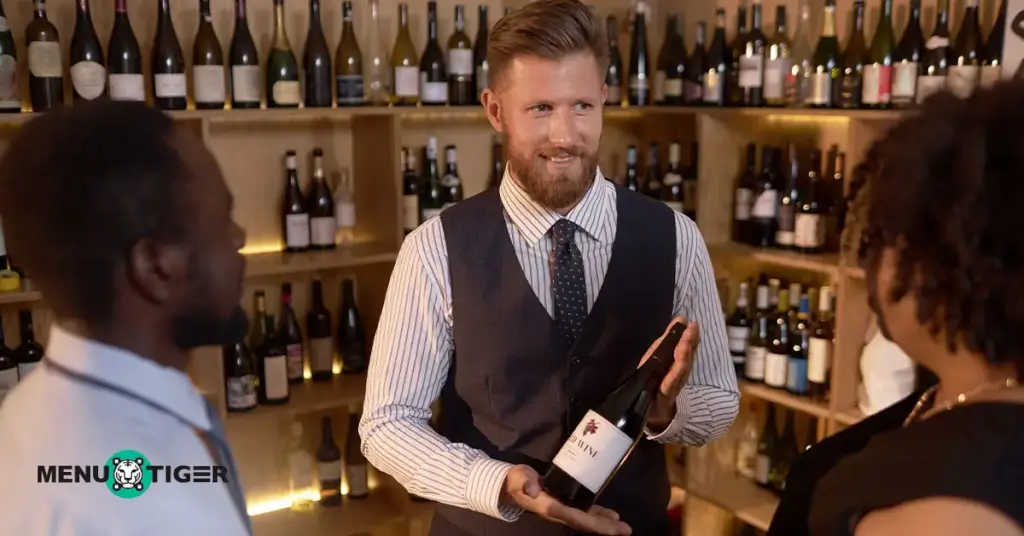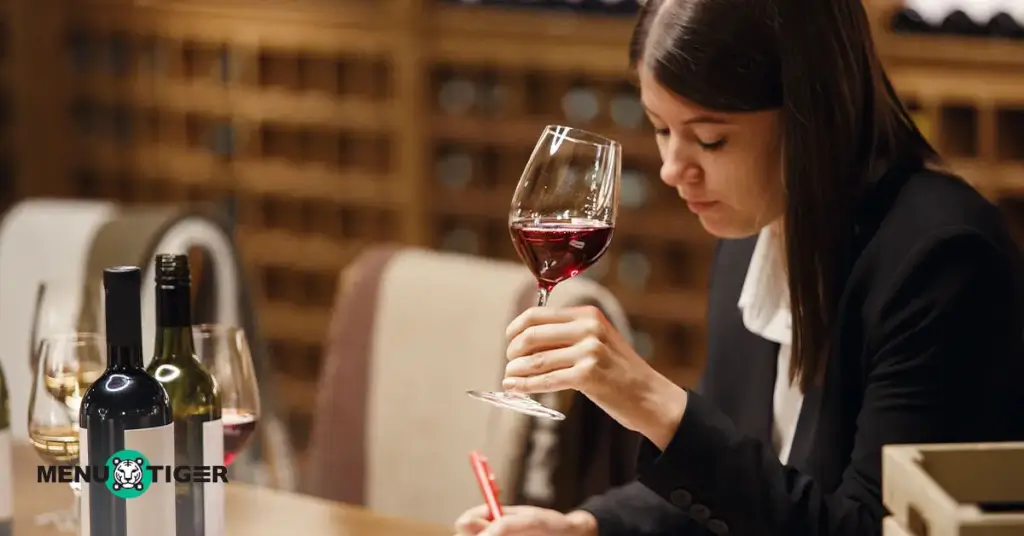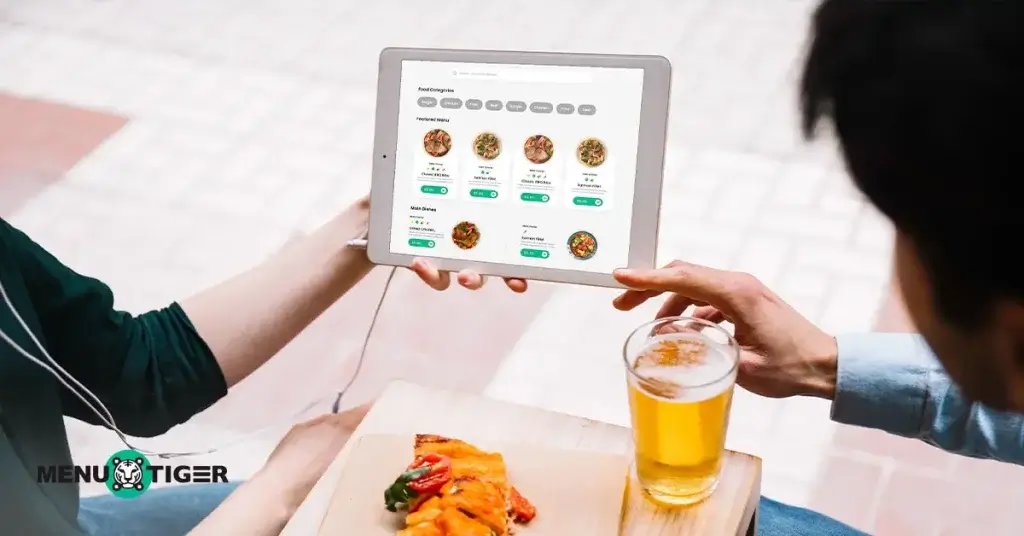
Corkage Fee Explained: Laws, Pricing, and Smart Strategies
Last Updated: November 10, 2025
As a restaurant owner, it can feel like a quiet betrayal to see guests bring their bottle without understanding the impact on your business.
After all, drinks (especially wine) are one of the biggest profit drivers in the industry. Instead of confronting them directly, a clear corkage fee and policy can do the talking for you.
With this fee in place, you don’t need to micromanage every bottle that walks through your door. You can focus on what is important: streamlining order management, offering excellent service, and building your brand.
However, to do this effectively, you first need to understand how corkage works and how to implement it strategically. This article will guide you through the process.
What is a corkage fee?
A corkage is a charge applied when guests bring their bottle (BYOB) of wine (or occasionally other beverages) instead of ordering from the restaurant’s menu.
The corkage meaning goes beyond just a fee; it helps cover the use of glassware, staff time for opening and serving the wine, and the lost profit from not selling one of their drinks.
Think of it as paying for the privilege of enjoying your bottle while still benefiting from the restaurant’s service, ambiance, and hospitality.
Why do restaurants charge it?
Many guests appreciate the option to bring their wine, especially for special bottles or personal favorites. However, offering BYOB isn't as simple as allowing a bottle at the table.
Behind the scenes, it affects both operations and profitability. So, before assuming it will just frustrate guests for this extra fee, it's important to understand the real reasons for the corkage and what that fee supports.
1. BYOB without corkage affect profitability
To help you understand this, here's an example of potential loss when no BYOB is charged:
Lost Profit
Suppose your restaurant buys a bottle of wine for $10 and normally sells it for $32.
When a guest brings their wine, you lose:
$32 − $10 = $22 in missed profit.
Wine is often one of the highest-margin items on the menu, so this is a major loss.
Staff service cost
Even though the wine wasn’t sold, your staff still opened the bottles, served, and cleared and cleaned the tables.
Let's say you pay your staff $15 per hour, and the service takes around 15 minutes; the labor cost is:
$15 ÷ 4 (number of 15 minutes in one hour) = $3.75
So, you're spending $3.75 in labor for a service that doesn’t generate any income.
Glassware and handling cost
When guests bring their wine, you still provide full service, such as glassware, chilling, and cleanup. However, this adds costs for water, detergent, electricity, wear and tear, breakage risk, and storage.
Let’s estimate that all of this per table costs you around $3, depending on the number of glasses used, chilling, and cleaning time.
Key Takeaway
If you don’t charge a fee for guests bringing their bottle, your restaurant could lose an estimated total of $29.75 per table based on the example. While it might not seem like much when a guest brings their wine, these costs add up quickly.
Over time, they quietly reduce restaurant profit margin and your ability to fully capitalize on each table, especially during busy service periods.
2. Increased liability

Even if a restaurant doesn’t sell alcohol, it is still legally responsible for how it is consumed on the premises. Dram shop laws can hold the business liable if a guest becomes intoxicated and causes harm.
Allowing outside alcohol means staff must still monitor consumption, check IDs, and prevent over-serving, all of which increase legal risk. The fee helps offset the cost of this increased risk.
3. Deters outside alcohol in alcohol-restricted venues
In venues where alcohol is heavily regulated with limited or special-use liquor licenses, bringing in outside alcohol without control can violate local laws or licensing terms.
Corkage helps deter this by formalizing the BYOB process, allowing the restaurant to regulate what’s brought in and stay legally compliant.
4. Encourages use of the restaurant's wine list

This fee encourages guests to explore the restaurant’s wine list, which is carefully selected to pair with the menu to increase restaurant sales over time.
Without a fee, guests might default to bringing their own, bypassing a key part of the dining experience and reducing sales.
5. Discourages abuse of BYOB policies
With corkage, the restaurant sets a clear expectation that BYOB is a privilege, not a free-for-all. It encourages guests to bring wine intentionally (often special or meaningful bottles) rather than just trying to save money.
This helps preserve the quality of the dining experience, keeps service running smoothly, and ensures BYOB remains a sustainable option for the business.

How much is a corkage fee in BYOB restaurants?

Corkage is usually set by the restaurant based on their policies, service, and pricing standards. But to give you an overview, here are some common charges of corkage based on industry data sources:
- According to 7shifts, a cloud-based team management platform, casual restaurants typically charge between $10 to $25 per bottle, while upscale dining establishments may charge around $25 to $50. For fine dining and high-end restaurants, the fee can range from $50 to $100 per bottle
- According to WebstaurantStore, a leading online supplier of restaurant equipment and goods, the average fee ranges from $10 to $40 per bottle, though it can reach $100 or more depending on the restaurant.
- Research from KNOW, a restaurant operations platform, shows that corkage charges in the U.S. typically range from $15 to $50 per bottle, but can exceed $100 in upscale restaurants, particularly in cities like San Francisco and New York.
While there’s no fixed legal rate for corkage, the ranges are quite similar. The fees are typically influenced by factors like service charges, pricing structures, and salary rates, which do follow legal guidelines.
How corkage laws work in the U.S.
If your restaurant allows guests to bring their bottle, understanding the corkage laws in your city isn’t just good practice, it's essential for protecting your business.
Let's break down how major U.S. cities handle corkage so you can confidently set policies that are both legal and profitable.
1. New York City
According to New York’s State Liquor Authority, a license or permit is required for BYOB if the venue can hold 20 or more people and operates for pecuniary gain (operated for a business)
A business with an occupancy of fewer than 20 people does not need a license or permit to allow BYOB. However, it may still charge customers for bringing their alcoholic beverages.
2. Chicago, IL
Chicago does not regulate BYOB in restaurants or commercial businesses, except for sidewalk cafés.
Restaurants will offer a corkage charge, and customers must bring and serve their alcohol, keep it in their possession, and leave with the empty container.
Businesses are encouraged to limit how much alcohol is brought in and consider carrying liability insurance.
3. Houston, TX
As stated by the Texas Liquor Law Attorney, corkage charges are not limited in Texas. Some restaurants may charge an amount equal to the price of a bottle of wine, while others apply a flat, modest fee for all customers who bring their drinks.
4. Phoenix, AZ
According to Cork and Journey, a platform that reviews corkage policies and fees, in Arizona, corkage is regulated based on whether a restaurant has a liquor license.
If a restaurant does have a liquor license, it may choose to allow guests to bring their wine and apply a corkage charge, typically between $10 and $50 per bottle, but it’s not required to permit it.
If a restaurant does not have a liquor license, it might allow guests to bring their wine.
5. Los Angeles, CA
In California, the Department of Alcoholic Beverage Control, BYOB, and its fee is entirely up to the restaurant. No laws are forcing them to allow BYOB or to charge/post a fee.
How to strategically implement a corkage if you offer BYOB at your restaurant
While corkage policies are widely accepted, the way they’re communicated and enforced can impact both your brand reputation and revenue.
The main goal for restaurant owners is to learn how to close a sale and increase profitability while offering a “you can Bring Your Own Wine (BYOW) option.
Here's how to implement it:
1. Turn corkage into a value-added experience

Instead of presenting it as just a fee, position corkage as a premium service. The idea is to make guests feel that they’re getting something special for the charge, not just paying to bring their bottle.
You can also use restaurant menu maker that offers a waiter call button that gives guests control.
This increases willingness to pay the fee and elevates brand perception, especially among wine-loving guests.
2. Waive corkage with wine list purchase
Offer wine pairing or encourage guests to explore your wine list by offering “Buy one bottle from our wine list, and we’ll waive corkage on one of your own.” Incentivizes guests to buy a high-margin item (your wine) in exchange for the privilege of bringing their own.
3. Use corkage to reward loyalty or VIP guests
Offer free or discounted corkage or consider a sale discount to returning guests, loyalty program members, or on special occasions like birthdays or anniversaries. This builds emotional loyalty with your most valuable customers.
4. Offer seasonal or themed corkage nights
To attract wine enthusiasts and boost midweek traffic, create special corkage nights around seasons, wine regions, or varietals.
5. Analyze competitors pricing
Before setting your fee, take time to benchmark against other restaurants in your local market and niche. Understanding how your competitors price corkage, and how they frame it, can guide you in setting a fee that feels fair, competitive, and brand-aligned
Here’s how to do it:
Research local restaurants with similar concepts
Focus on establishments with a similar price point, cuisine style, and target audience. Collect data from their official restaurant websites in place, menus, online reviews, and social media, and look for corkage details.
Identify positioning gaps
Are most restaurants in your area charging $25 per bottle with no added value? You might differentiate by charging $20 but including a wine glass upgrade or light decanting service, framing it as a premium experience.
Create a comparison matrix
Build a simple chart comparing restaurant name, the fee waived, with purpose, restrictions, and added value services. Without a comparison, you risk overpricing (and deterring guests) or underpricing (and leaving revenue on the table).
6. Use your digital menu to track food paired with brought-in bottles

Use your digital menu to build a database of real guest pairing preferences. Then, track which restaurant dishes guests order alongside their bottles of wine (corkage).
Tag food items based on the type of wine guests bring (e.g., red, white, sparkling). Over time, track the most popular pairings and feature them in a ‘Corkage Pairings' section on your menu, where the corkage charge is already factored into the pairing price
7. Be compliant with corkage laws
If your restaurant tries to bypass the rules, just like some guests might sneak in bottles without paying corkage, you could be putting your business at serious legal risk.
Allowing customers to bring bottles without a clear corkage policy or without following proper licensing procedures is not just a small oversight. It is a violation.
If something goes wrong, such as underage drinking, overconsumption, or an alcohol-related incident, your restaurant can still be held legally responsible, and all your strategies will be wasted.
What every guest should know
As a restaurant owner, it's important to help guests understand the value behind common charges like service fees, tips, and corkage.
Clear communication not only manages expectations but also builds trust and appreciation for the care and professionalism your team provides.
Service charges and tips are different from corkage
Understanding service charge vs tip can be tricky, especially with a corkage cost added in.
Service charge covers the general service provided by the staff, such as taking orders, delivering food, and cleaning up. While tips are optional and go directly to the server as a thank you for personalized service.
Corkage is a privilege, not a guarantee
Corkage is a privilege because it is something a restaurant voluntarily allows, not something guests are automatically entitled to.
When a restaurant lets guests bring their wine, they are giving up potential profit from their wine list, which typically offers some of the highest margins in the business.
When a restaurant chooses to offer corkage, it is extending a professional courtesy that adds value to the guest's experience and should be respected accordingly.
Policies may vary between restaurants
Some guests may feel surprised if our fee is higher than what they’ve seen elsewhere. Corkage are not standardized, so they can vary from one restaurant to another.
Some may charge a small fee, while others charge more based on the level of service, type of establishment, and resources involved.
The term is broadly used
While the term “corkage” originated from wine service, it has now expanded in meaning and is commonly used to describe charges for any outside food or beverage brought into an establishment.

Join other restaurateurs mastering corkage!
With your knowledge and strategy, you're now equipped to turn corkage from a passive policy into an active business advantage.
By aligning your corkage fee with smart menu management, clear guest communication, and strong service execution, you can create a seamless experience that supports your team, enhances profitability, and respects your business.
Make corkage work for your restaurant, not against it.
FAQs
Eulla
Eulla joined MENU TIGER’s Content Team with a foundation in English teaching. She combines language expertise and creativity to produce engaging content that educates audiences and drives meaningful results.


